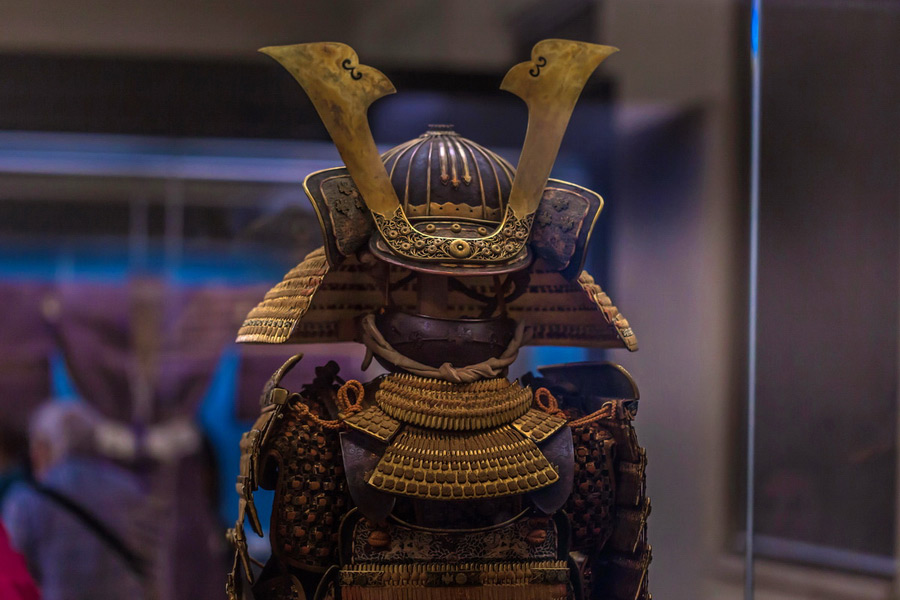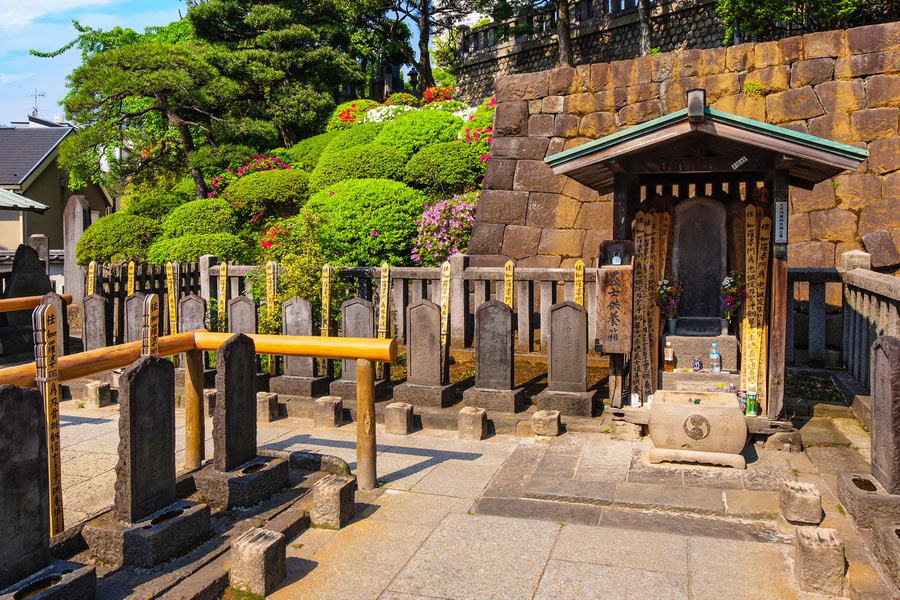Samurai Experience in Japan

Japan is home to about a dozen samurai towns, like Kakunodate, which have preserved their cultural heritage over the centuries. These picturesque sites offer a real journey through cobblestone streets, earthen walls, inner gardens with streams, and tiny waterfalls usually concentrated near pompous castles. Below, you’ll find a selection of samurai villages, museums, and entertainment in Japan to plan your next getaway, whether you are a fan of history, culture, and architecture or looking for calm and serenity.
Samurai Culture to See in Tokyo and Kyoto
While the samurai class no longer exists, visitors to Tokyo and Kyoto can still embrace the aura of these legendary warriors through various activities. From visiting the museums and temples to participating in samurai-themed experiences, there are many ways to get a feel of the samurai world in these two cities.
Please note entrance fees for museums and other sites vary, but children typically receive a 50% discount on entrance tickets. We strongly recommend prior reservations for popular samurai sights, especially during peak tourist seasons. Plan your itinerary and secure your spot to avoid disappointment.
Samurai Museum, Tokyo

The Tokyo Samurai Museum hosts an impressive collection of authentic artifacts like samurai armor, swords, and helmets. It also features live katana (sword) performances, samurai calligraphy lessons, a lecture on the Japanese sword, and a live music show. The ticket price includes all the activities except for the music performance. Non-Japanese speakers can leverage the English guide. Men can try on a samurai outfit and women – a kimono - and then take photos with the ancient sword. A large souvenir shop sells everything from samurai costumes to revered items of the culture.
- Hours: 10:30 AM – 9:00 PM (8 PM on Saturday) (last entrance – 8:30 PM)
- Admission: 1, 900 yen
- Location: Shinjuku, Tokyo Kabukicho 2-25-6
- Getting there: It’s a 5-minute walk from the Seibu Shinjuku Station
- Website: samuraimuseum.jp
Samurai Theater, Tokyo
Master sword techniques, stances, and strikes while dressed in kimono and hakama, and when ready, fight a villain samurai. That is one of the adventures to try at the Samurai Theater in Tokyo. Another is learning how to cut a tatami mat with a sword. During the show, expect the unexpected and enjoy the interaction as you and your children become part of the story in this thrilling attraction.
- Hours: 10:30 AM – 6:00 PM
- Admission: 9, 800 yen – Samurai experience; 13,000 yen – Japanese sword cutting
- Location: 40 Yokoteramachi, Shinjuku City, Tokyo 162-0851
- Getting there: Take the Tokyo Metro Tozai Line, get off at the Kagurazaka Station Exit 1a, and walk 350 meters to get to the place.
- Website: samurai-theater.com
Ninja Samurai Experience, Tokyo
One may ask what ninjas have to do with samurai. If you have ever watched a ninja movie, you may remember that they often wore tight black clothing, leaving only their eyes visible. Samurai, however, were clad in colorful kimonos and shiny armor that highlighted their nobility. Though both lived during ancient times in Japan, there are significant differences between them. Learn about this and much more through a ninja and samurai course in Tokyo. Explore the dark arts of enemy neutralization with ninja stars or darts. Or enjoy sword training with the best martial arts masters (senseis) of this dojo.
- Hours: 10:00 AM – 8:00 PM
- Admission: Start at 7,500 yen per person. Prices range depending on whether you book a group or a private course.
- Location: 4 F Bayfrere East, 2-3-9 Shiomi, Koto City, Tokyo, 135-0052
- Getting there: Take the JR Keiyo Line, get off at Shiomi Station, and walk 3 minutes to get there.
- Website: ninjasamurai.tokyo
Bushi Tradition at the Tokyo National Museum

The Armor Exhibition at the Tokyo National Museum showcases stunning examples of actual samurai gear and reproductions from different periods of the Samurai era. 81 objects tell the tale of the Japanese elite warrior class from the Middle Ages through the nineteenth century. The exhibition gives insight into the historical and functional contexts of armor and swords of this period, bringing out the beauty and aesthetic appeals of these works.
The Tokyo National Museum is located at Ueno Park, the most visited sightseeing spot.
- Hours: 9:30 AM – 5:00 PM
- Admission: 1,000 yen
- Location: 13-9 Uenokoen, Taito City, Tokyo 110-8712
- Getting there: It’s a 10-minute walk from Ueno Station (JR Line).
- Website: tnp.jp
Samurai Restaurant Time
After spending a day sightseeing in the capital, having dinner at the Samurai Restaurant Time can be a good wrap-up for the day. The hallmark there is the dinner performance featuring samurai culture and elements of folk tales about demons. It isn’t a traditional eatery like izakaya, but a pure show, very colorful and full of energy. The restaurant replaced the famous Robot Restaurant in the Kabukicho nightlife district that closed in 2020. The food at the restaurant is delicious. Expect sukiyaki, ramen, udon, and other delicacies.
- Hours: 1:30 PM – 5:00 PM
- Admission: 10,000 yen
- Location: 1-7-7 Kabukicho, Shinjuku, Tokyo
- Getting there: From the East Exit of Shinjuku Station, proceed to the intersection. Cross the road, avoiding train cars below while heading toward Kabukicho. Cross the broader road at the traffic lights, turn right, and continue for one block, then take a left turn onto Sakura-dori Street. The restaurant is down the road.
- Website: samurai-restaurant.tokyo
Graveyard and Museum of “47 Ronin” in Sengaku-ji

Sengaku-ji Temple, located in the Shinagawa Ward of Tokyo, Japan, is a significant historical and cultural site known for its association with the legendary 47 Ronin (lordless samurai). The temple serves as the graveyard for these warriors who, in the 18th century, avenged the death of their master, Lord Asano Takumi no Kami. Visiting Sengaku-ji Temple offers another opportunity to explore Japanese history and bushido codex and pay respect to the loyalty and sacrifice of the 47 Ronin.
- Hours: 7:00 AM – 6:00 PM
- Admission: Free except for the museum entrance fee, which is 500 yen
- Location: 2 Chrome-11-1 Takanawa, Minato City, Tokyo 108-0074
- Getting there: It’s a 1-minute walk from Sengakuji Station (Toei Asakusa Line)
- Website: sengakuji.or.jp
Kenbu – Samurai Dance Show in Kyoto
Apart from witnessing artifacts, hearing the fascinating stories of samurai, and taking a sword-cutting lesson in a real waraku samurai house, the Kyoto Samurai Experience presents a dazzling kenbu sword dance. During the feudal period, bushi practiced kenbu to improve concentration for the upcoming battle. Watching how performers twirl and dance with a sword is awe-inspiring.
- Admission: 18,000 yen
- Hours: 10:00 AM – 5:00 PM
- Location: 111 Inabacho, Nakagyo Ward, Kyoto, 604-8803
- Getting there: It’s a 3-minute walk from Omiya Station (Toei Asakusa Line).
- Website: waraku-kyoto.com
Samurai Ninja Museum, Kyoto
This is another museum of samurai and ninjas that caters to a captivating glimpse into ancient history and the lives of the ferocious warriors. It showcases ancient artifacts, including hundreds of swords, armor, and weapons. Replicas of samurai household items and exhibits dedicated to ninjas enhance the senses. Visitors can wear traditional attire, like helmets, armor, kimonos, or yukatas, and take memorable photos. They can also participate in the tea ceremony, attend Zen meditation, and witness costumed sword fights. Additionally, a souvenir shop sells authentic swords, warrior armor, and other items.
- Admission: 3,000 yen (basic ticket)
- Hours: 9:30 AM – 6:30 PM
- Location: 292 Higashi Daimonjicho, Nakagyo-Ku Utano koji Building, 2F, 604-8043, Kyoto
- Getting there: From Marutamachi Station, get to Shijo Station and walk 10 minutes to the museum. The fastest way to get there is by riding a taxi.
- Website: ma-ko.com
Samurai Historic Settlements

There are a few charming samurai settlements, stunning Zen gardens, and castles in Japan to delve into. Besides, there are a handful of samurai neighborhoods to visit in the country. Some tourist favorites are Matsue in Shimane Prefecture, Kanazawa in Ishikawa Prefecture with the famous Nagamachi Samurai District, and well-preserved houses in Kakunodate, Semboku of Akita Prefecture.
In these quarters, open to the public, buildings are organized according to the class hierarchy of samurai society. Visitors can view their humble dwellings, the barracks of foot soldiers, and the impressive residences, gardens, and tea rooms of esteemed bushi like Oda Nobunaga, Toyotomi Hideyoshi, and Tokugawa Ieyasu.
Samurai enthusiasts, even those with a passing interest alone, will undoubtedly find something captivating in these culturally vibrant destinations.
Shingen-ko Festival
One of the exciting things about visiting Japan is the country's colorful festivals or matsuri. If you happen to be traveling through Yamanashi Prefecture in late October, you will want to put a Shingen-ko Matsuri on your calendar. This annual event celebrates the legacy of Takeda Shingen, the prominent warlord of the increasingly turbulent period known as Sengoku. The matsuri occurs in Kofu, famous for the largest samurai parade. In 2012, Shingen-ko got in the Guinness World Record as the largest samurai gathering, with over 1000 participants.
Watching hundreds of Japanese knights marching down the streets of Kofu will leave anyone in awe. The city can be easily reached from Tokyo by train.
Getting to Kofu from Tokyo: Limited Express trains (tokkyu) operate between Tokyo and Kofu and will get you to Kofu within 90 minutes. Taking a highway bus from Shinjuku Station is a viable option too. The one-way trip takes around 2 hours and 20 minutes.

